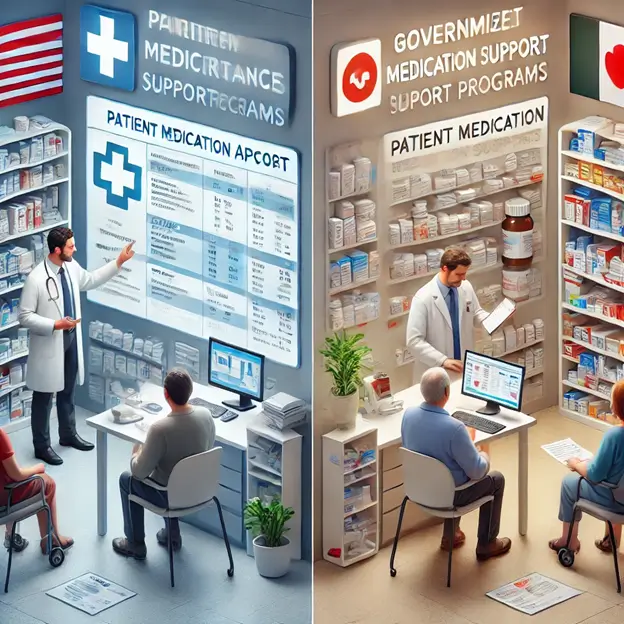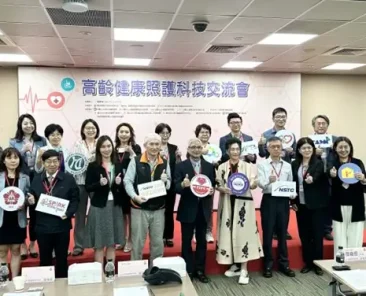In recent years, the public-private partnership model is gradually becoming a solution in the pharmaceutical industry, as the global drug cost continues to rise, the burden of out-of-pocket payment by patients is heavy, and the uneven distribution of medical resources. In recent years, pharmaceutical companies have launched patient-specific medication support programs, and are committed to providing a full range of services such as personalized drug financial assistance, health education and case management, so as to reduce the financial burden of patients and improve treatment compliance and health outcomes.
Reconstructing the role of the public and private sectors under the new paradigm of public governance
In the field of health care delivery, the traditional bureaucracy is facing the dual challenges of professional complexity and financial sustainability. Medical resources are non-exclusive and competitive, and relying solely on government regulation or market mechanisms may lead to the “tragedy of medical public finance”. This scenario has prompted countries to explore a third pathway – to bring pharmaceutical companies, medical institutions, insurance units and patient groups into a common governance structure through institutional dialogue platforms.
1. Operational Architecture and Regulatory Innovation of Patient Support Programs in the United States
Medicare, the most important public health insurance program in the United States, is primarily for the elderly and certain vulnerable groups, but the high price of drugs and the burden of deductibles often make it difficult for many beneficiaries to access the drugs they need. It is in this context that the Patient Support Program was created to supplement Medicare coverage and help patients cope with the financial difficulties caused by the cost of medicines.
At the same time, pharmaceutical companies are increasingly realizing that in addition to continuous research and development of innovative drugs, ensuring that patients can actually receive treatment and take medication on time is the key to improving market competitiveness. The patient support plan launched by the pharmaceutical company not only includes financial support for drugs and application-based discounts, but also covers multiple services such as health education, case management and psychological support. This comprehensive support from clinical to community, from funding to information, has formed a new public-private cooperation model, providing a win-win solution for reducing drug burden and improving treatment outcomes.
In 2017, CMS issued the Manufacturer Assistance Program Compliance Guidance, which established a three-tier regulatory structure: including the access level, to avoid the flow of resources to high-income groups; At the implementation level, blockchain technology is introduced to track the flow of drugs to prevent repeated claims and black market resale; At the assessment level, and the extent of the impact of subsidy measures on the continuation of treatment of patients was analyzed over time
2. The operating mechanism of the Pharmaceutical Patient Support Program
Patient support programs launched by pharmaceutical companies usually take a multi-layered approach, not only to deal with drug prices, but also to operate through the following mechanisms:
- Drug Funding & Discount Programs
Depending on the patient’s income status, insurance coverage, and clinical needs, pharmaceutical companies offer different levels of drug discounts or free drugs. These funding programs are designed to directly reduce the out-of-pocket amount of the patient, thereby alleviating the financial burden and allowing the patient to receive additional financial assistance to facilitate the continuation of treatment, even in addition to the basic coverage of Medicare. - Educational & Information Services
Patient support programs often include a wealth of health education resources, such as medication guidance, disease management knowledge, and explanations of treatment outcomes. Through online platforms, hotline services, on-site lectures, etc., pharmaceutical companies have established communication bridges with patients to help them better understand their own conditions and treatment plans, and further improve treatment compliance. - Case management and psychological support
Some programs have a dedicated case management service, where professional nurses or pharmacists are assigned to regularly monitor the patient’s treatment progress and provide psychological counseling and life guidance when necessary. This holistic support not only helps to address the difficulties encountered by patients during treatment, but also encourages active participation in treatment and improves overall health outcomes.
3. CMS policy guidelines and regulatory framework
While pharmacy patient support programs play an active role in reducing patient burden, CMS, as the administrator of public health insurance, must ensure that these programs do not interfere with the overall operation of Medicare and must ensure fairness and transparency in the application process for all patients. To this end, CMS has established a series of strict policy guidelines and regulatory mechanisms, including:
- Strict policy guidelines
• Eligibility Criteria & Application Process
CMS requires pharmaceutical manufacturers to establish an open and transparent application process that clearly defines criteria such as income, assets, and clinical needs, so as to ensure that only eligible Medicare beneficiaries can apply for patient assistance programs, thereby avoiding waste of resources and inequity.
• Funding Scope and Limitations
According to CMS regulations, the funding provided by the Patient Assistance Program must not duplicate Medicare coverage. This means that the discounts or subsidies offered by pharmaceutical manufacturers cannot exceed the limits set by the federal government, so as not to affect the overall operation of Medicare Part D.
• Information Transparency and Publicity Requirements
Pharmaceutical manufacturers are required to publish the operating data of the patient assistance programme, the amount of subsidy and the number of beneficiaries on a regular basis. This not only makes it easier for patients to understand their rights, but also allows the CMS to conduct continuous monitoring and evaluation to ensure the fairness and transparency of the plan. - Establish a cooperation mechanism
• Cross-departmental negotiation and data sharing
CMS regularly consults with pharmaceutical manufacturers and Medicare Part D plan administrators to ensure that all parties are on the same page on plan design and implementation. Through cross-departmental data sharing, the CMS can obtain detailed data on the operation of the program, and adjust the monitoring strategy in a timely manner according to the beneficiary’s application status, usage and treatment effect.
• Expert Advice and Committee System
In response to market changes and technological advancements, CMS has convened experts from the fields of healthcare, pharmacy, policy and regulation, and set up a special committee to regularly evaluate the implementation of the patient assistance program and make policy recommendations to ensure that the guidelines are up to date. - Strict regulatory mechanism
• Periodic reviews and assessments
CMS conducts regular reviews of participating pharmaceutical facilities to review their application processes, funding criteria, and disclosures, and to confirm compliance with federal norms through document reviews, on-site visits, and beneficiary interviews.
• Internal and external audits
In addition to internal controls, CMS also uses third-party auditors to conduct an independent evaluation of the program to ensure that there are no misconduct in data reporting, grant disbursement, and compliance. When a problem is discovered, the relevant authorities will take corrective or punitive measures in accordance with the regulations.
• Continuous monitoring of the system
Using advanced information technology, CMS has established a continuous monitoring system to track the operation status of the plan in real time, capture abnormal data in a timely manner, and intervene in the first time to protect the interests of beneficiaries to the greatest extent.
Fourth, the complementary advantages and practical results of the cooperation between Medicare and pharmaceutical companies
Under the public-private partnership model, the cooperation between Medicare and pharmaceutical companies presents multiple complementary advantages, which are mainly reflected in the following aspects:
- Reduce the financial pressure on patients
Discounts and funding options offered by pharmaceutical companies can effectively reduce out-of-pocket costs and compensate for the lack of Medicare coverage, so that patients can continue to receive treatment despite high drug prices, thereby reducing the risk of discontinuation of treatment due to cost issues. - Improve treatment adherence and effectiveness
Multi-level support with integrated drug funding, health education, and case management can motivate patients to be more proactive in complying with doctors’ instructions, reduce missed or mistaken doses, and further improve treatment outcomes and long-term health outcomes. - Promote the efficient allocation of medical resources
The public-private partnership model integrates government and corporate resources to form a well-established support network. Medicare provides a wide range of insurance coverage, while pharmaceutical companies offer detailed plans based on individual differences, and both parties work together to promote the management of patients from resource allocation to treatment delivery. - Establish a data sharing and evaluation mechanism
Through cross-departmental data sharing and regular assessments, both parties are able to continuously optimize patient support programs based on actual treatment outcomes and patient feedback. This data-driven strategy not only helps to adjust existing programs, but also provides a valuable basis for future policymaking.
5. Challenges and future prospects
Although the public-private partnership model has shown significant results in reducing drug burden and improving patient adherence, there are still some challenges in implementation:
- Regulatory & Compliance Requirements
Patient support programs must provide funding without impacting the overall operation of Medicare Part D, which requires pharmaceutical manufacturers to adhere to federal norms when setting discounts and funding amounts, and to ensure transparency and fair applications. - The diversity of individual patient needs
There are significant differences in the needs of patients, and how to strike a balance between standardized processes and differentiated services on a case-by-case basis is a topic that all participants need to continue to explore. - Long-term sustainability
With the continuous changes in medical technology and market environment, how to ensure that the plan maintains long-term sustainable development with policy support and is consistent with the direction of national medical policy is still an urgent problem to be solved in the future.
In the future, with the strengthening of cross-departmental communication and coordination, the improvement of data sharing mechanisms and continuous technological innovation, the public-private cooperation model is expected to be further expanded and deepened. For medical professionals, an in-depth understanding of this cooperation model can not only grasp the latest developments in the industry, but also provide a forward-looking reference for clinical practice and policy formulation.
CMS has formed a complementary and solid framework for cooperation with pharmaceutical patient support programs by setting strict policy guidelines, establishing cross-departmental cooperation mechanisms, and implementing rigorous regulatory measures. This public-private partnership model not only shows significant advantages in reducing the drug burden of patients and improving treatment compliance and efficacy, but also provides a blueprint for the stability and sustainable development of the entire pharmaceutical industry.
Resources
Pharmaceutical Manufacturer Patient Assistance Program Information
https://www.cms.gov/medicare/coverage/prescription-drug-coverage/patient-assistance-program




